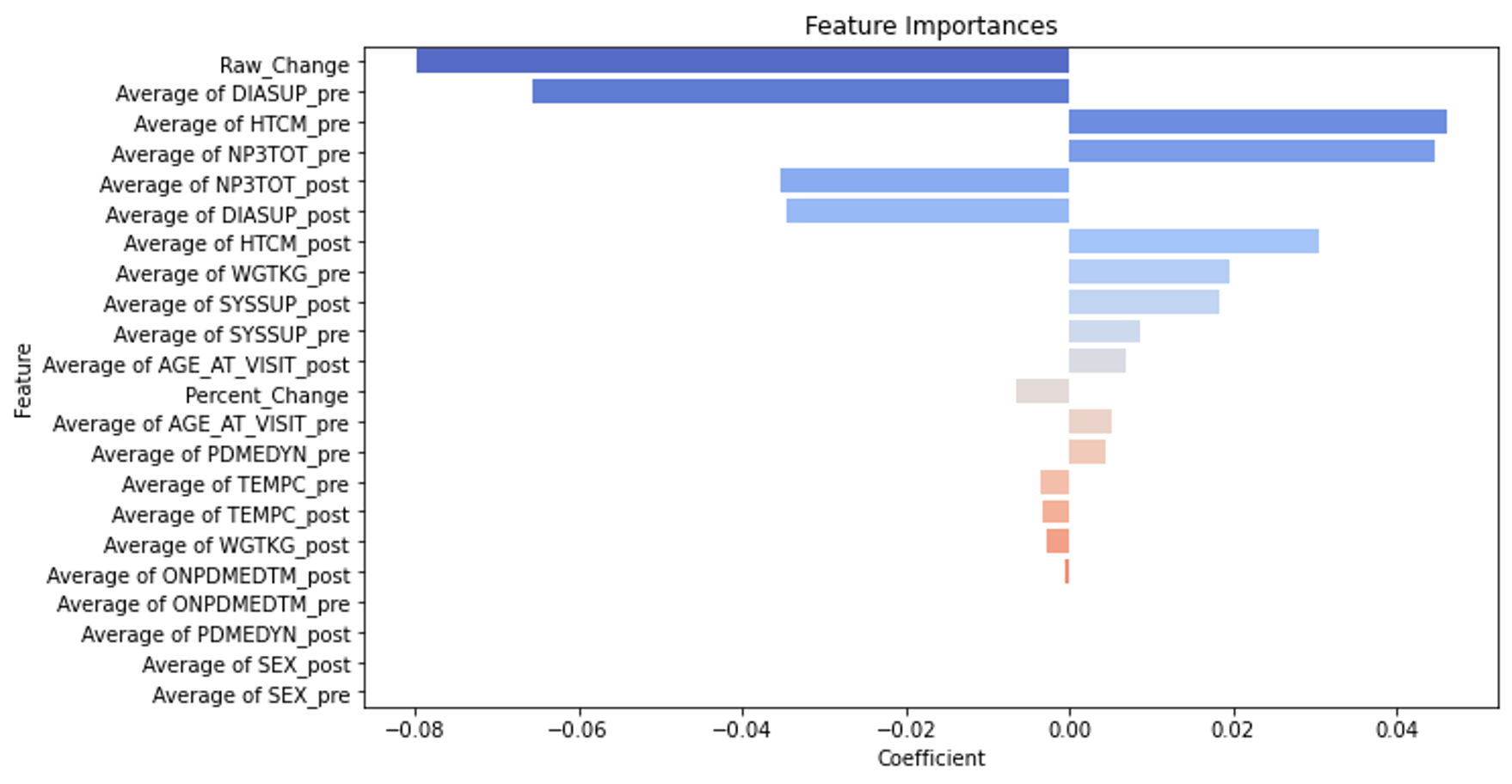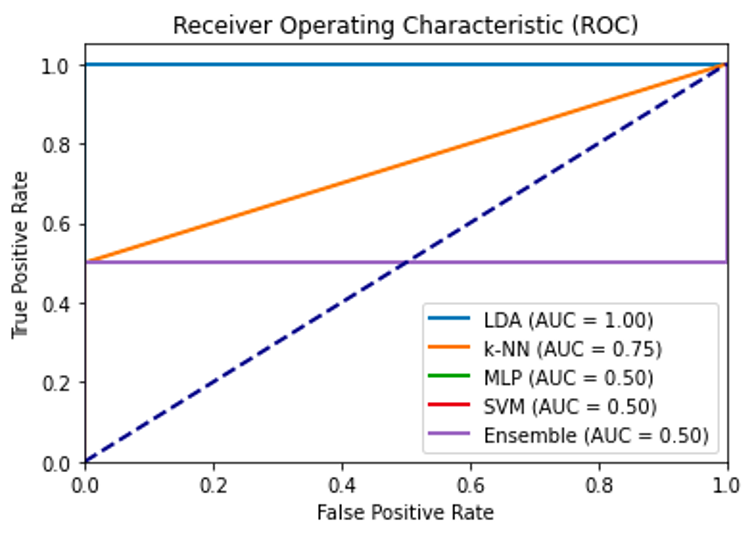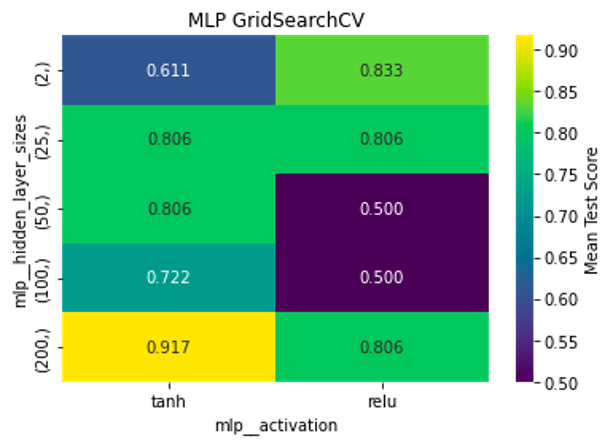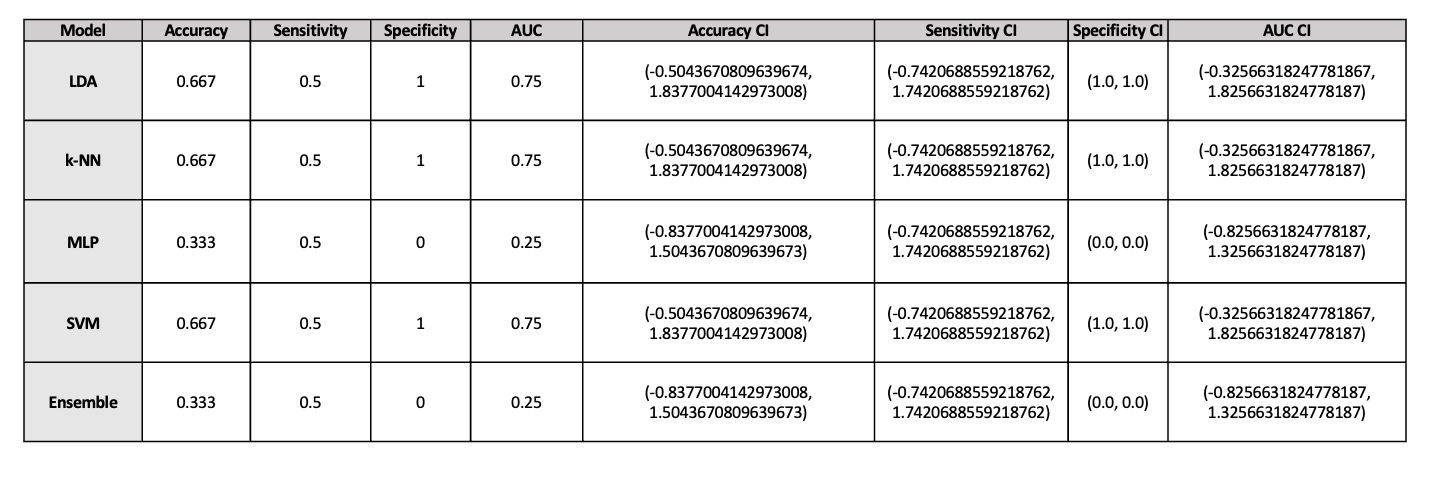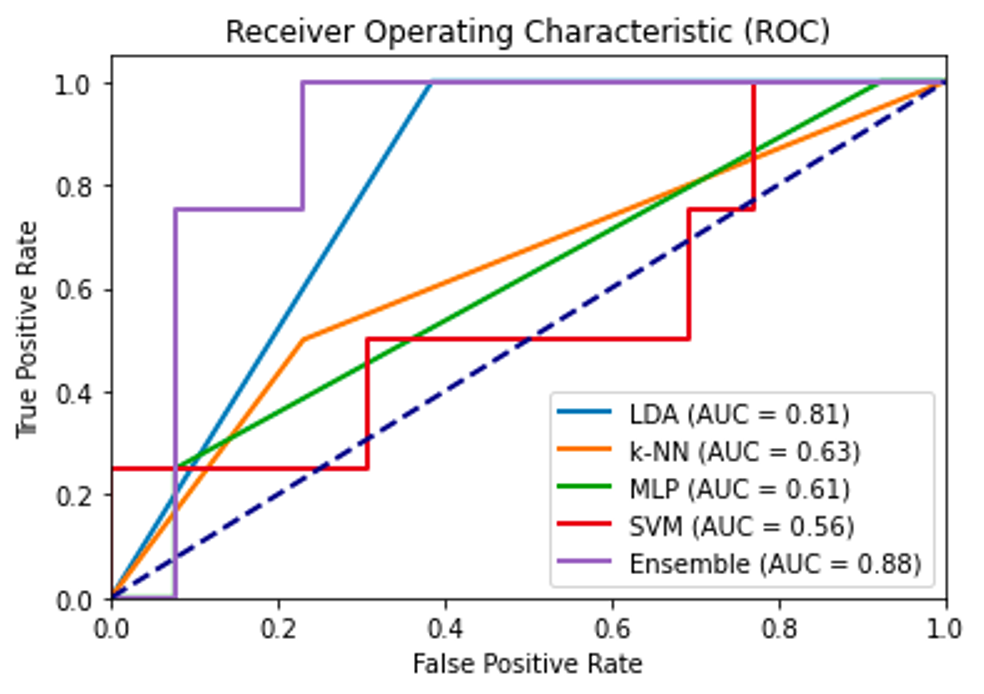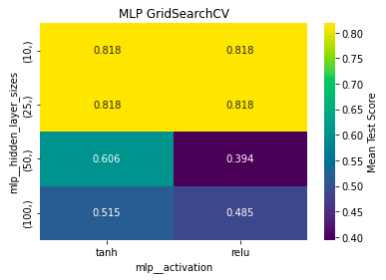Category: Parkinsonism, Others
Objective: This study investigates several machine learning methods for predicting motor score reduction following DBS surgery in patients with PD using multi-modal feature selection.
Background: DBS is a well-established therapy that has been shown to improve motor symptoms in patients with PD. Machine learning models trained on large multi-modal datasets, including clinical, demographic, medication, and imaging information, provide opportunities to identify important features for predicting a high response to DBS therapy.
Method: We compared four popular machine learning frameworks (LDA, k-NN, MLP, SVM) and the ensemble of all models in the classification of motor score reduction following DBS surgery. Feature selection using XGBRegressor was performed on a retrospective cohort of 8867 PD patients from the Parkinson’s Progression Markers Initiative (PPMI) with available demographic, clinical, and imaging data. 233 patients were found to have DBS data and we selected those with both Pre-DBS and Post-DBS UPDRS-III scores. GridSearchCV was performed for hyperparameter tuning of ML models, which were trained and tested using an 80/20 split to evaluate performance in the binary classification of patients with an average total UPDRS-III score reduction (threshold <50%). An additional analysis was performed using 96 patients grouped by DBS OFF exams and DBS ON exams to evaluate each model’s prediction of DBS status.
Results: The top 5 features reported by XGBoost were Age, Weight, Hoehn and Yahr Stage, Recent Medication Dose Time Before Exam, Blood Pressure, and Standing HR. When trained on the Pre-Post DBS data, LDA, k-NN, and SVM performed best with all three achieving AUC =0.75 and accuracy = 0.66. When trained on DBS ON-OFF data, LDA (AUC = 0.81) and the Ensemble (AUC = 0.88) performed the best, while k-NN achieved the highest accuracy (0.76).
Conclusion: We developed a machine learning pipeline consisting of XGBoost for feature selection and evaluated 4 machine learning frameworks (LDA, k-NN, MLP, SVM) with hyperparameter tuning for prediction of UPDRS III reduction greater than 50% following DBS surgery. Our findings support the use of predictive models trained on large multi-modal datasets, with further validation needed for clinical decision-making. Additional exploration of deep learning methods may provide insight into the predictive potential of multi-modal datasets on DBS outcomes.
To cite this abstract in AMA style:
C. Raimondo, C. Wu, M. Alizadeh. Machine Learning Prediction of Motor Score Reduction following DBS Surgery in PD [abstract]. Mov Disord. 2023; 38 (suppl 1). https://www.mdsabstracts.org/abstract/machine-learning-prediction-of-motor-score-reduction-following-dbs-surgery-in-pd/. Accessed January 7, 2026.« Back to 2023 International Congress
MDS Abstracts - https://www.mdsabstracts.org/abstract/machine-learning-prediction-of-motor-score-reduction-following-dbs-surgery-in-pd/


